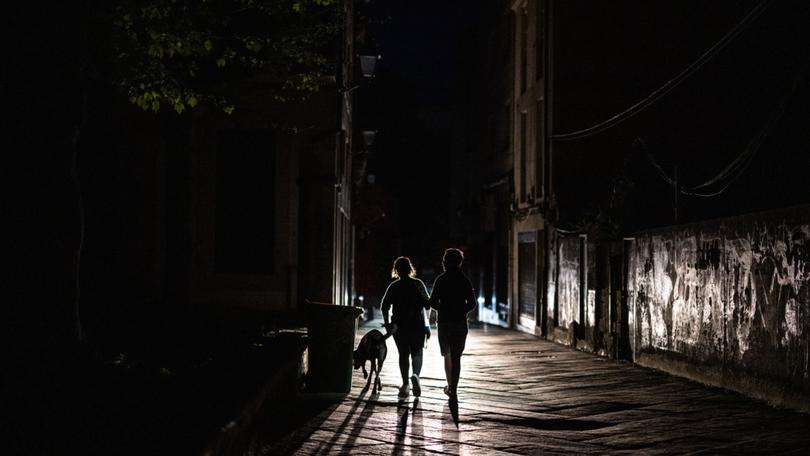NICOLA SMITH: Could Labor’s renewable reliance end in a Spain & Portugal-like blackout?

The worst blackout in Spain and Portugal’s history this week has stoked debate about the risks of over-reliance on renewable energy and whether the volatility of supply from solar and wind makes power systems more vulnerable.
A sudden outage on Monday saw the equivalent of 60 per cent of demand in Spain drop in five seconds around midday, causing major disruptions to transport, businesses and phone services.
The catastrophic event, still under investigation, raises questions about Australia’s own target to generate 82 per cent of its electricity from renewable sources, although energy experts stress the reliability of the network and that there is no cause for alarm.
Sign up to The Nightly's newsletters.
Get the first look at the digital newspaper, curated daily stories and breaking headlines delivered to your inbox.
By continuing you agree to our Terms and Privacy Policy.Spain and Portugal have been promoted as success stories in the renewable energy transition but also face additional challenges due to their relative isolation from Europe’s energy supply.
Minutes before the outage, Spain was running on 60.64 per cent solar photovoltaic generation, with 12 per cent wind and 11.6 per cent nuclear.
Red Electrica, the Spanish grid operator has ruled out a cyber attack, and has so far identified two incidents of power generation loss, probably from solar plants that created instability in the electric system and a breakdown of its interconnection with France, sparking chaos in both Spain and Portugal.
Investment bank RBC estimated the resulting financial loss at €2.25 billion to €4.5b, blaming government complacency about infrastructure in a system dependent on solar power with little battery storage.
Pratheeksha Ramdas, a senior analyst at the consulting firm Rystad Energy, said the high percentage of renewables in Spain’s energy mix “exposed difficulties in balancing intermittent supply”.
Portugal’s “complete reliance on imports underscored its lack of flexibility and energy storage”, she wrote in a research note. She said the disruption “serves as a clear warning”.
The shocking blackout comes as Australia faces its own crossroads at the Federal election over whether it should commit to a majority renewables supply or embrace nuclear power.
Labor says the 82 per cent renewables target within five years is the most efficient and cheapest way to hit net zero goals.
The Coalition, which wants to introduce nuclear power to the energy mix in the next decade, has warned of the risks of putting the country’s eggs in one basket with a renewables-only strategy.
Addressing the National Press Club on Wednesday, Prime Minister Anthony Albanese urged Opposition Leader Peter Dutton to “come clean” on the costs of nuclear reactors and what they would mean for local communities.
“How he can justify the sunniest continent on earth moving away from solar power and the driest continent on earth, investing in the form of energy which uses the most water,” he said.
National energy experts have downplayed the implications of this week’s European crisis for Australia.
Professor Kylie Catchpole, an energy systems specialist at ANU’s School of Engineering, said there was “no evidence” to suggest that over-reliance on renewables was a factor in the power outage.
“All kinds of systems fail, for a variety of reasons, and we’ll have to wait for the investigation to find out what happened,” she told The Nightly.
“Historically weather and transmission co-ordination failures have been major factors.
“To ensure resilient grids we will need to ensure that we have enough generation in each State, as well as batteries that can help maintain frequency in the event of grid disturbances.”
Johanna Bowyer, the lead analyst for Australian Electricity at the Institute for Energy Economics and Financial Analysis pointed out that Australia had not previously had issues with renewables reliability.
The East Coast grid, which runs from Queensland through down to Victoria and to Tasmania, already used about 40 per cent renewables across the year, and South Australia 72 per cent, met very high operational standards, she said.
“We have a very tight reliability standard in the national electricity market, which says that we only want to have 0.002 per cent of energy being unserved,” said Ms Bowyer.
She added that 95 per cent of disruptions were caused by sudden breakdowns of poles and wires in the grid.
Australian energy market operators were also working on a plan to operate a system with 100 per cent instantaneous renewables in 2025, said Ms Bowyer.
Christian Zuur, the general manager of market, operations and grid at the Clean Energy Council, stressed that “blackouts have occurred long before the growth in renewable energy”, pointing to a major power system event in May 2021 in Queensland after a coal fired power station explosion.
“What we do know is that Australian clean energy technologies are already helping to protect us from blackouts,” he said, adding that 2024 saw record volumes of investment in large-scale storage.
“As we replace our ageing coal-fired fleet in Australia with renewables, big batteries are helping to stabilise the network, providing immediate energy and capacity when and if there are sudden shocks to our energy system.”

